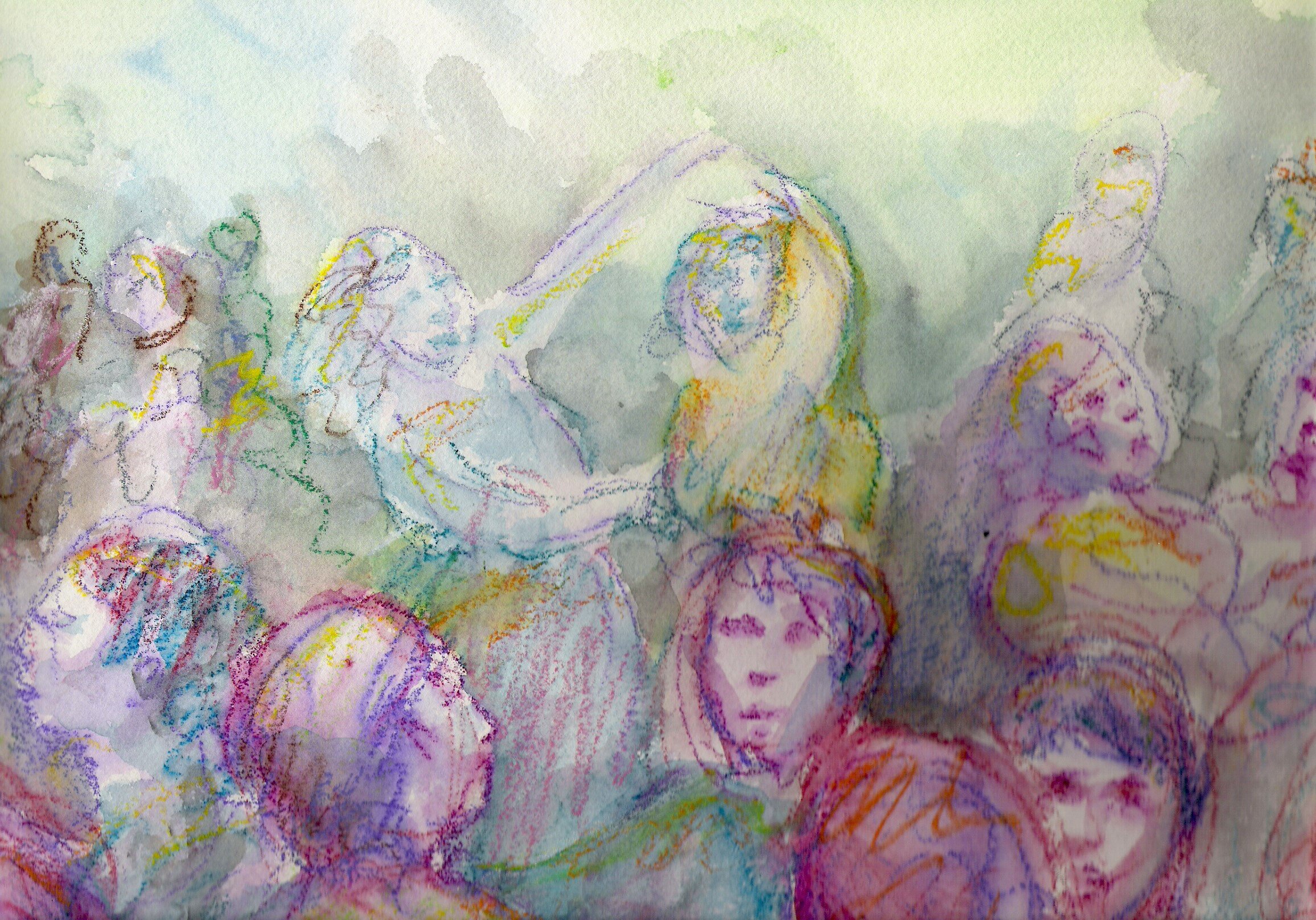Biangles, 1985
The Biangles were possibly the first symbol for bisexual visibility. Within a couple years of its creation by Liz Nania, originally on pins, buttons, and t-shirts, it began to be adopted worldwide. Soon after the creation of the rainbow flag, the three colors of the Biangles became the basis for the bisexual flag. The colors of the overlapping triangles represent attraction to both, or all, sexes, symbolized by pink and blue, traditionally associated with girls and boys in the US; and the lavender at the center represents the wholeness and queerness of bisexuality, referencing the Lavender Menace in the 1970s and other cultural associations with lavender and queerness/lesbians in the 1980s and 1990s. The triangle references the pink triangle adopted by LGBTQ+ communities in the 1980s in the US as a form of queer resistance, as it was originally used in Nazi Germany in the 1930s and 40s to identify gay men.
Two Step, 1993
20” x 14”, watercolor and Caran D’ache on Rives BFK paper
Swingtime, 1995
24” x 18”, watercolor and Caran D’ache on Rives BFK paper


